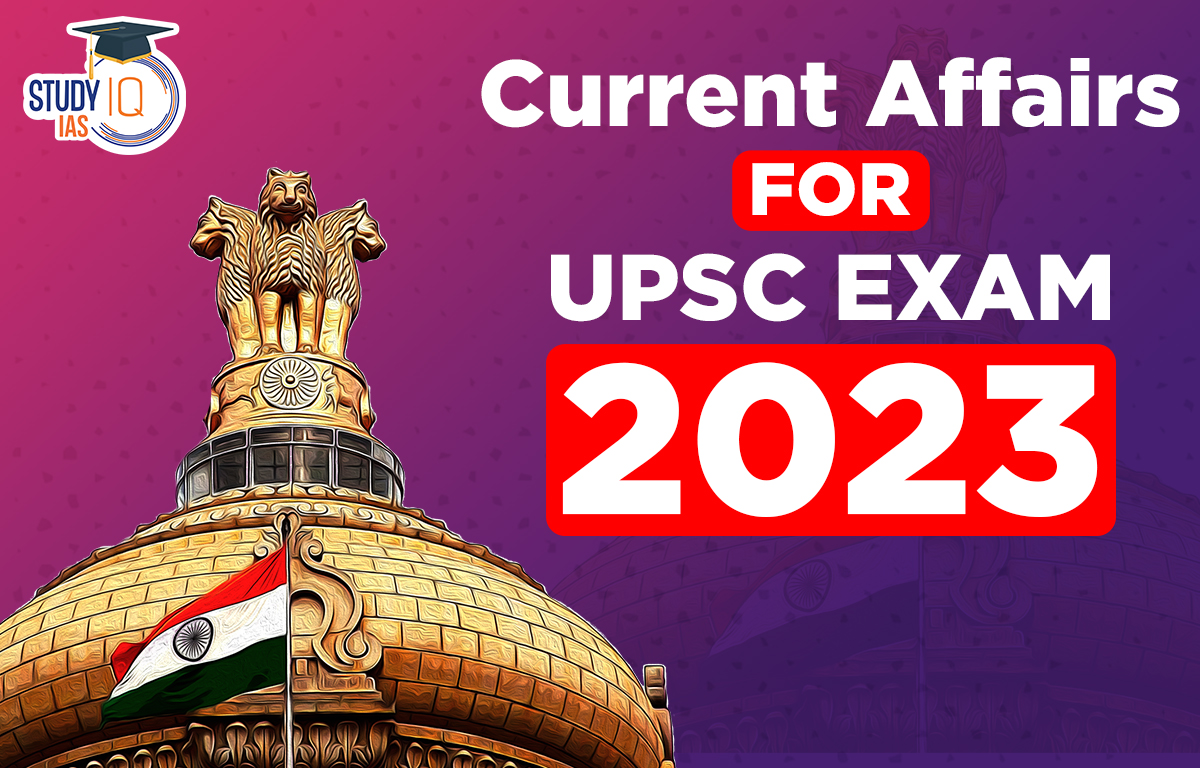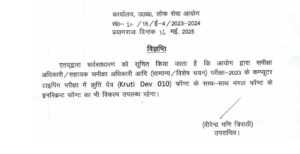Current Affairs 17th April 2023 for UPSC Prelims Exam
Kaziranga National Park
Context: Army may help build Bailey bridges in the Kaziranga National Park and Tiger Reserve for faster movement of forest guards in strategic, vulnerable pockets of the one-horned rhino domain.
About Kaziranga National Park
- It is located in the State of Assam on the southern Bank of Brahmaputra River.
- It is the single largest undisturbed and representative area in the Brahmaputra Valley floodplain.
- It was declared as a National Park in 1974.
- In 1985, the park was designated as a World Heritage Site by UNESCO.
- It was also declared as a Tiger Reserve in 2006.
- It is also recognized as an Important Bird Area by Bird Life International for the conservation of avifaunal species.
- The entire area of Kaziranga is formed by alluvial deposits from the Brahmaputra and its tributaries.
- Important fauna: It is home to two-thirds of the world’s great one-horned rhinoceroses (Vulnerable, IUCN).
- Pobitora Wildlife Sanctuary has the highest density of one-horned rhinos in the world and second highest number of Rhinos in Assam after Kaziranga National Park.
- Rhinos are listed as vulnerable on the IUCN Red list of Threatened Species.
- Vegetation: Dense tropical moist broadleaf deciduous forests and grasslands make up the KNP.
- Threats: Floods due to overflowing of Brahmaputra, encroachment of territory, pollution, and loss of biodiversity due to population growth are some of the threats.
Current Affairs 15th April 2023 for UPSC Prelims Exam
T-Cell Immune System
Context: Recent studies pointed out that Omicron variant of SARS-CoV-2 virus could evolve strategies to evade T cell immunity.
About T Cell
- T cell, also called T lymphocyte, is a type of leukocyte (white blood cell) that is an essential part of the immune system.
- T cells are one of two primary types of lymphocytes (B cells being the second type) that determine the specificity of immune response to antigens (foreign substances) in the body.
- T cells originate in the bone marrow and mature in the thymus.
- There are two main types.
- Cytotoxic T-cells destroy infected cells.
- Helper T-cells send signals that direct other immune cells to fight infection.
Working of T-Cells in Immune System
- T-cells work once they’re activated. Several steps have to happen before a T-cell activation:
- A cell called an antigen-presenting cell (APC) locates evidence of the intruder and attaches it to a structure called major histocompatibility complex (MHC). This step is important because T-cells can’t recognize evidence of an intruder unless it’s attached to MHC.
- The T-cell binds to the MHC. There are two types of MHC. One fits each type of T-cell. The CD8 receptor on a cytotoxic T-cell can only bind to MHC-1.
- The CD4 receptor on a helper T-cell can only bind to MHC-2.
- Once the T-cell binds with all the matching parts, it activates. The binding is important because it ensures that the T-cell is the right one to fight the intruder.
- An activated cytotoxic T-cell kills infected cells or cancer cells. An activated helper T-cell sends signals that tell other immune cells what actions to take to fight the intruder.

Overseas Citizenship of India (OCI)
Context: The Overseas Citizenship of India status of an actor has been cancelled by the Home Ministry.
About OCI
- OCI is an immigration status that allows a foreign citizen of Indian origin or their spouses to live and work in India for an indefinite period.
- OCI aimed to meet the demands of the Indians living overseas who insisted on dual citizenship. Indian Constitution does not have provisions for dual citizenship.
- Introduction: The OCI card was introduced in 2005 by amending the Citizenship (Amendment) Act of 2005.
- The government decided to merge the Person of Indian Origin scheme with the OCI scheme in 2015. Individuals who held a PIO card were deemed to be OCI Cardholders.

- Eligibility:
- OCI person is the one:
- who was a citizen of India on or after January 26, 1950; or
- who was eligible to become a citizen of India on that date; or
- who is a child or grandchild of such a person; or
- who is a minor child and whose both parents are citizens of India or one of the parents is a citizen of India; or
- who is a spouse of an Overseas Citizen of India holder whose marriage has been registered and subsisted for a continuous period of not less than two years.
- According to Section 7A of the rules, an applicant is not eligible if he, his parents or grandparents have ever been a citizen of Pakistan or Bangladesh.
- OCI person is the one:
- Grounds for revoking:
- If the OCI status has been obtained through fraud
- If they show dissatisfaction towards Indian constitution
- If they were imprisoned
- If they conspire with enemy nations
- If they violate any Indian law
- If their marriage to an OCI card holder has been dissolved

Difference between NRI and OCI
| NRI | OCI |
|
OCI is not a citizen of India but a foreign citizen of Indian descent.
Individual needs to apply for OCI if they fulfill the criteria specified by Indian laws. Income earned globally is subject to taxation based on the conditions of DTAA (Double Tax Avoidance Agreement). They can live in India for an indefinite period without visa. The eligibility for OCI is specified under Citizenship act. |
Vishu
Context: Recently, Keralites celebrated Vishu with traditional pomp and gaiety.
About Vishu
- Vishu is a Hindu festival celebrated in the Indian state of Kerala, Tulu Nadu region in Karnataka, Mahé district of Union Territory of Pondicherry, neighbouring areas of Tamil Nadu and their diaspora communities.
- It is also known as the Malayalam New Year and is celebrated on the first day of the Malayalam month of Medam, which usually falls in April.
- On Vishu day, the members of the household wake up early in the morning and view the “Vishukkani,” which is a special arrangement of items like rice, fruits, flowers, betel leaves, coins, and a mirror, arranged in a particular order.
- The Vishu arrangement typically includes an image of Krishna.
- The highlight of the Vishu celebration is the “Vishu Sadya,” a grand feast comprising of various vegetarian dishes, served on a banana leaf.
- The feast includes a variety of dishes, such as sambar, avial, thoran, pachadi, and payasam, among others. The feast is a time for families to come together and bond over food and festivities.
Magnetoresistance
Context: Recently, researchers in the U.K., led by Nobel laureate Andre Geim, have discovered another property of graphene known as magnetoresistance.
About Magnetoresistance
Magnetoresistance refers to the change in the electrical resistance of a material when it is subjected to an external magnetic field. This phenomenon is observed in a wide range of materials, including metals, semiconductors, and insulators.
There are two types of magnetoresistances: Giant magnetoresistance (GMR) and Tunnel magnetoresistance (TMR).
- GMR is observed in thin metallic films that are separated by a non-magnetic spacer layer, while TMR is observed in magnetic tunnel junctions, which consist of two magnetic layers separated by an insulating layer.
- In GMR, the resistance of the material changes as the orientation of the magnetic fields of the two layers changes. When the magnetic fields are aligned parallel to each other, the resistance is low, and when they are antiparallel, the resistance is high. This change in resistance is used in various technological applications, such as magnetic sensors, magnetic read heads in hard disk drives, and magnetic random-access memory (MRAM).
- In TMR, the resistance of the material changes due to the quantum mechanical tunneling of electrons across the insulating layer. When the magnetic fields of the two layers are parallel, the tunneling probability is high, and when they are antiparallel, the tunneling probability is low, resulting in a change in resistance.
- TMR is used in various applications, including MRAM, magnetic field sensors, and spintronics.
About Neutral Plasma
- A neutral plasma is a type of plasma in which the number of ions and electrons are balanced, resulting in a net charge of zero. In other words, a neutral plasma contains equal numbers of positively charged ions and negatively charged electrons, and overall, it has no net charge.
- Plasma is often referred to as the fourth state of matter, after solid, liquid, and gas. It is a highly ionized gas, consisting of ions, electrons, and neutral atoms or molecules. Plasmas are formed when gases are subjected to high temperatures or electric fields, causing the atoms or molecules to lose or gain electrons and become ionized.
- In a neutral plasma, the ionization rate is equal to the recombination rate, so the number of ions and electrons remains constant, resulting in a net charge of zero. Neutral plasmas are commonly found in space, such as in stars, planetary atmospheres, and the interstellar medium. They are also used in various industrial and technological applications, such as plasma cutting, plasma arc welding, and plasma processing.
Chabahar Port
Context: India hosted the first meeting of the India-Central Asia Joint Working Group (JWG) on the Chabahar port.
About the Chabahar port
- Chabahar Port is a seaport in Sistan-Balochistan province of Iran, on the Gulf of Oman.
- It consists of two separate ports named Shahid Kalantari and Shahid Beheshti.
Significance of the Chabahar port
- It is the only Iranian port with direct access to the ocean as it provides a gateway to the Arabian Sea and beyond.
- It provides India and Afghanistan with an alternative route to access the Central Asian markets, bypassing Pakistan.
- The Chabahar port is considered a gateway to golden opportunities for trade by India, Iran and Afghanistan with central Asian countries.
- Its geographic proximity to Afghanistan, Pakistan, India and International North-South Transport Corridor (INSTC) gives it the potential to develop into one of the most important commercial hubs.
India and Iran collaboration on the Chabahar port
- In 2016, India, Iran, and Afghanistan signed a trilateral agreement to develop the Chabahar port and related infrastructure, such as roads and railways, with India committing $500 million for the project.
- The port has been exempted from the US sanctions on Iran, allowing India to continue investing in the project.
- India has already completed the first phase of the development of the port, and work on the second phase is currently underway.



 UPPSC RO ARO Exam Date 2025 Out: Typing ...
UPPSC RO ARO Exam Date 2025 Out: Typing ...
 Maharashtra Bill to Curb Urban Naxalism,...
Maharashtra Bill to Curb Urban Naxalism,...
 International Maize and Wheat Improvemen...
International Maize and Wheat Improvemen...





















